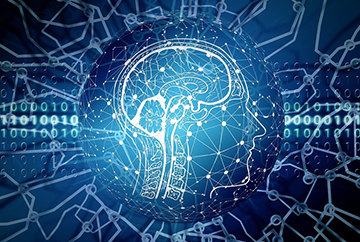Based on this construct of the digital age, enterprises are now transforming themselves to become ‘intelligent’ by implementing digital technologies such as Artificial Intelligence (AI), Machine Learning, Internet of Things (IoT), Augmented Reality & Cloud Computing etc.
What truly differentiates an intelligent enterprise from traditional businesses is that the ‘intelligence’ they carry around their products and operations.
This capability of an enterprise helps them be more proactive and deliver a differentiating experience to their customers For example, building ‘smart’ products can enable identification and resolution of any product failures much before the actual breakdown happens, thereby, improving the experience of their consumer.
This transformation is a journey and needs careful planning and execution. The pace of the journey can change basis many internal and external factors apart from the organization’s business strategy. However, in today’s highly complex market scenario, not moving in this direction brings in risk of survival and growth.
Digital Transformation – Embarking towards the Era of Intelligence
Through Platform
The only constant aspect about consumer demand over the years has been its rapidly changing nature. Therefore, trying to bridge the gap between their products/service offerings and the market requirements, organizations are striving to imbibe agility into their business. Being agile refers to the flexibility of an organization to adapt to changes in industry trends, demand pattern, consumer behavior or regulatory compliance.
Investing & adopting the right technology, tools and digital platforms, organizations can leverage the data, gain insights, which empowers them to better understand & predict the market movement to stay ahead of the game. Having a robust digital foundation will not only streamline their processes but also impact their overall objectives to drive growth.
This can additionally help them be more operationally efficient, drive innovation in their offerings and differentiate themselves with respect to their competition.
Through Products
Traditionally, businesses could measure and assess the efficiency of any of their products through reported performance information, complaints of failure or faults, customer feedback and reviews. Today, intelligent enterprises have started embedding ‘smartness’ into their products and operational infrastructures using smart sensors.
Integrated with capabilities of digital technologies such as IoT and AI, smart, connected products can capture and share data on their current state and usage patterns in real-time. The insights so collected can be used to monitor performance and read contributing factors in case of failures.
This in turn can help in introducing innovation in product design to deliver better quality, hence instantly enhancing the business opportunity manifolds. So, their smartness makes such products much more valuable than their predecessors which is why organizations are moving towards ‘smart’ and ‘connected’ products.
Through Processes (Operations)
The benefits of smartness apply to an enterprises’ operational infrastructures as much as they do to its products. In the case of manufacturing processes for example, operational equipment infused with smart sensors can derive intelligence on product defects or mechanical faults, allowing reduced wastage, enhanced efficiency and improved equipment accuracy.
While having worked in isolation earlier, these segments facilitated highly disconnected and often incomplete knowledge on operations to enterprises. In the digital age, both these worlds are merging together to enhance the enterprise’s ability to make better decisions, target newer business opportunities & get a better insight on market demands
One of the biggest changes happening in enterprises which are moving towards intelligent operations is the convergence of OT (Operations Technology), dealing with aspects of operations and manufacturing and IT (Information Technology), concerned with customer related processes such as billing, procurement and invoicing.
This intelligence has helped organizations to not only understand their customers’ consumption patterns but also take proactive steps




